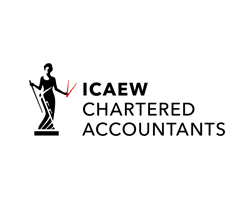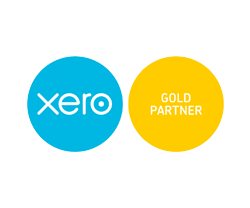March 20th, 2015Budget 2015 Summary
Liverpool accountants, Jonathan Ford & Co, give their view on this week’s Budget…
No surprise that the Chancellor’s Budget March 2015 was aimed at winning the votes of savers and pensioners in the May General Election.
But, it wasn’t the usual pre-election giveaway as the Chancellor stressed his prudence by concentrating on debt repayment and the importance of “mending the roof while the sun shines”, something that he accused the previous Labour Government of failing to attend to.
THE END OF TAX RETURNS?
The Government proposes to transform the tax system over the next Parliament by introducing online tax accounts to remove the need for individuals and small businesses to complete annual tax returns. These online accounts will show details of how much tax has been paid and how much is owed and will be pre-populated with information such as employment and pension income provided by RTI. This may work for individual taxpayers with straightforward affairs, but many accountants will have concerns, based on past experience, about the accuracy of the data and the calculations.
Taxpayers will still need to provide any details HMRC does not have and will be responsible for checking that the information is correct.
We’ve written a separate blog on this – as our concern is that the scrapping of an annual return will mean information needs to be provided on a far more regular basis – like monthly.
PERSONAL ALLOWANCES
As already announced the personal allowance for 2015/16 will be £10,600. The Budget on 18 March announced a further above inflation increase to £10,800 for 2016/17 and £11,000 in 2017/18.
Watch out if your adjusted net income exceeds £100,000 as the personal allowance is reduced by £1 for every £2 over £100,000 giving an effective rate of 60% on income between £100,000 and £121,200 for 2015/16.
Contact us for advice on planning to avoid this 60% rate.
INCOME TAX BANDS
The 20% basic rate band is £31,785 for 2015/16 and will be £31,900 for 2016/17. This means that you pay 40% tax if your taxable income exceeds £42,385 for 2015/16 and £42,700 for 2016/17.
It’s proposed that the higher rate tax threshold will increase to £43,300 for 2017/18.
The 45% top rate continues to apply to taxable income over £150,000 for 2015/16.
FURTHER CHANGES TO ISAs
The current £15,000 ISA limit is to be increased to £15,240 from 6 April 2015. Remember that the 50% cash ISA restriction was abolished from 1 July 2014 so that any combination of cash and stocks and shares can be held within the ISA wrapper up to the overall £15,240 limit. The Junior ISA limit increases to £4,080 from 6 April 2015.
In the 2015/16 tax year individuals will be able to take money out of their ISA and put it back in within the same year, without losing their ISA tax benefits as long as the repayment is made in the same financial year as the withdrawal.
ZERO TAX RATE ON SAVINGS 2015/16
As announced last year there will be a zero rate on the first £5,000 of savings income from 2015/16 onwards. This will only provide full benefit to those with taxable income between the basic rate band £10,600 and £15,600.
£1,000 INTEREST INCOME TAX FREE 2016/17
From April 2016, a tax-free allowance of £1,000 (or £500 for higher rate taxpayers) will be introduced for the interest that people earn on savings. If they are a basic rate taxpayer and have a total income up to £42,700 a year, they will be eligible for the £1,000 tax-free savings allowance.
If they are a higher rate taxpayer and earn between £42,701 and £150,000, they’ll be eligible for a £500 tax-free savings allowance, but those with income in excess of £150,000 a year will be taxed in full on their interest income.
FREE MONEY? – NEW HELP TO BUY ISA
These new accounts to help first time buyers save for a deposit to buy their first home will be available from Autumn 2015. First time buyers over 16 will be able to open these special ISAs, make an initial deposit of up to £1,000 and then save up to £200 a month, and the Government will boost it by 25%. That’s a £50 bonus for every £200 saved, up to £3,000 in total topping up their £12,000 savings to £15,000.
FURTHER PENSION FLEXIBILITY
The Government will bring in new legislation from 6 April 2016 to allow people who are already receiving income from an annuity to agree with their provider to assign their annuity income to a third party in exchange for a lump sum or an alternative retirement product. Currently such action would give rise to a 55% charge, but this is to be abolished. This change will allow those who are already in receipt of a pension annuity to access the new flexible pension rules.
PENSION FUND LIFETIME ALLOWANCE REDUCED
From 6 April 2016 the pension fund lifetime allowance will be reduced from £1.25million to £1million. Transitional protection for pension rights already over £1million will be introduced alongside this reduction to ensure the change is not retrospective. The lifetime allowance will then be indexed annually in line with CPI from 6 April 2018.
CAPITAL TAXES
It had already been announced that the CGT annual exempt amount would increase to £11,100 for 2015/16. With a top CGT rate of 28% this allowance potentially saves £3,108 a year, or £6,216 for a married couple.
There has been no change in the inheritance tax nil rate band which remains at £325,000 until 2018. There are a number of changes to the inheritance tax treatment of trusts. Please contact us if you wish to discuss these or any other capital tax planning matters.
FURTHER RESTRICTIONS TO CGT ENTREPRENEURS’ RELIEF
You may recall that in the 2014 Autumn Statement it was announced that it is no longer possible to claim CGT entrepreneurs’ relief against the gains arising on the sale on or after 3 December 2014 of goodwill by a sole trader or partnership to a limited company in which they have a controlling interest.
It has now been announced that from 18 March 2015 CGT entrepreneurs’ relief will be restricted on certain “associated disposals”. The 10% CGT rate will no longer be available on the disposal of personal assets used in a business carried on by a company or a partnership unless they are disposed of in connection with a disposal of at least a 5% shareholding in the company or a 5% share in the partnership assets.
GET SPENDING? – ANNUAL INVESTMENT ALLOWANCE
The Annual Investment Allowance (AIA) provides a 100% tax write off for the cost of most plant and machinery acquired by businesses, a notable exception being motor cars. In Budget 2014 the Chancellor announced that the allowance would be increased to £500,000 per annum for expenditure incurred between 1 April 2014 and 31 December 2015 (from 6 April 2014 for unincorporated businesses).
This generous allowance is due to fall to just £25,000 from 1 January 2016 and the Chancellor acknowledged that such a level would be too low. However, the new limit will not be announced until later this year. Remember that the AIA is available for assets bought on hire purchase as well as those bought for cash. It can also be claimed in respect of fixtures and fittings within buildings. Contact us to help you maximise tax relief for capital expenditure as the timing of expenditure can be critical.
R&D TAX CREDIT RATE INCREASED
As already announced in the 2014 Autumn Statement, companies that are Small and Medium sized Enterprises (SMEs) carrying out qualifying Research and Development can currently claim a corporation tax deduction of 225% of their qualifying spend. This relief is being increased to 230% with effect from 1 April 2015. In order to improve the cash flow of loss making SMEs the tax rules allow the company to surrender the loss attributable to the enhanced R&D spend for a tax refund. The current tax refund rate is 14.5% of the loss attributable to the enhanced expenditure. Contact us if you would like to discuss whether your company could qualify for R&D tax relief.
VAT REGISTRATION LIMIT £82,000
The VAT registration limit has been increased by £1,000 to £82,000 from 1 April 2015. The de-registration limit also increased by £1,000 to £80,000
TAX RELIEF ON SMALL DONATIONS TO CHARITY INCREASED TO £8,000
The Gift Aid Small Donations Scheme (GASDS) allows charities to treat small donations such as those in collecting boxes as if Gift Aided.
With effect from 6 April 2016 the maximum annual donation amount which can be claimed through GASDS will be increased from £5,000 to £8,000 allowing charities and Community Amateur Sports Clubs to claim Gift Aid style top-up payments of up to £2,000 a year.
SINGLE 20% CORPORATION TAX RATE
A single corporation tax rate of 20% will apply from 1 April 2015 whatever the level of your company’s profits.





